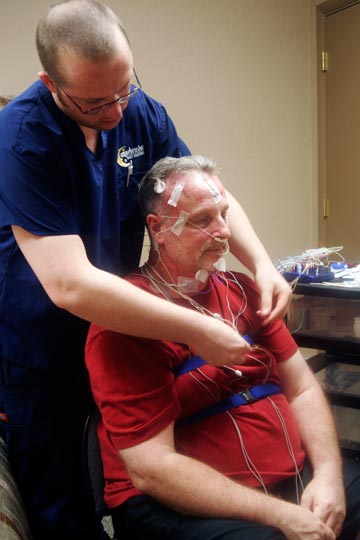Fatigue Standards Lag Behind Research
A sleep-deprived person behind the wheel or in the cockpit is just as dangerous as a drunken driver.
That’s one of the conclusions scientists have reached after years of study on the need for sleep — and what happens when people don’t get enough of it.
Scientific understanding of sleep has improved dramatically over the past 20 years with a surge of research on everything from sleep apnea and internal body clocks to the reaction times and judgments of those who are sleep-deprived. But U.S. transportation guidelines lag far behind the research.
The regulations are outdated across all sectors of transportation. Current flight-time restrictions for airline pilots haven’t significantly changed since the 1930s, although they are currently under review. Regulations governing truck and bus drivers were only recently updated, and those changes might be temporary due to legal challenges. And the U.S. Coast Guard has failed to act on at least six NTSB recommendations that date back as far as 1978 to revise hours-of-service regulations for commercial boaters.
Jim Hall, former chair of the NTSB, said it’s shocking that U.S. agencies that oversee air, rail, water and highway safety all have failed to take scientific evidence about “the limits on performance and the rest requirements for human beings and put that into the regulations.”
Tired — or impaired?
Sleep research shows startling similarities between the workplace performance of people who are fatigued and those who are intoxicated.
Someone who has been without sleep for as little as 24 hours performs at the same level as someone who has a 0.10 percent blood-alcohol content, which exceeds or matches the legal limit for driving in all 50 states, according to studies conducted in Australia, Switzerland, Austria, England and other countries.
Steven Hursh of the John Hopkins University School of Medicine, who has studied fatigue for more than 30 years, has found that tired pilots take longer to react, suffer from attention lapses and miss things. They may lose their ability to keep track of multiple things at one time, and they do a poor job of assessing risk, making decisions they would consider too dangerous if they weren’t so tired.
A tired pilot doesn’t mean the plane will crash. “Fortunately, systems are built to prevent most of the cascade of errors that would lead to accidents,” including co-pilots, relief crews, automatic systems and autopilot systems, Hursh said.
Still, pilots collapsing into a hotel bed at the end of a long day in the sky may never know how narrowly they avoided an accident, NTSB investigator Malcolm Brenner said. “The system is so forgiving that you don’t realize how close you came,” he said. “You really cut your safety margin, and most of the time you’ll land safely, but you are impaired.”
The body’s clock
Anyone who gets less than eight hours of sleep is not operating at 100 percent efficiency, said Scott Shappell, a Clemson University professor and director of the school’s Human Factors Institute.


 Science of Sleep
Science of Sleep